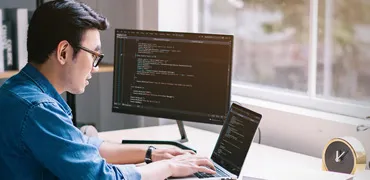Predicting the Next AI Wave: 10 AI Technologies to Look Out for in 2024

“AI is probably the most important thing humanity has ever worked on.” Sundar Pichai, CEO of Google, made this statement in 2018 when talking about AI technologies. That was quite a bold statement from the boy wonder, who hails from Tamil Nadu. Now, however, stepping back to see the potential landscape of AI technologies in 2024, one might find themselves at a fascinating intersection where technological marvels meet profound societal contemplation. This perspective allows for a thoughtful consideration of both the advancements and the broader implications these technologies may bring.
According to an estimate from the International Data Corporation (IDC) Worldwide Artificial Intelligence Spending Guide, investments in AI-focused systems are anticipated to reach over $300 billion by 2026. We thus delve into the practical efficiency of virtual agents and explore the critical transparency of explainable AI. This exploration will enhance our understanding of highly specific domains. Additionally, it will help us decode the complexities underlying these AI technologies.
Which AI Technologies are Set to Dominate 2024?
1. Natural Language Generation
Natural Language Generation (NLG) is an AI-driven software process that generates natural spoken or written language from both structured and unstructured inputs. It makes it easier for computers to respond to users in a language comprehensible to humans, as opposed to computers.
For instance, NLG can provide a customized, understandable response after analyzing user input. This input includes requests to voice assistants, questions to chatbots, calls to customer support centers, or comments on survey forms.
2. Natural Language Understanding
Natural language understanding involves using the input of a natural language, such as a sentence or a paragraph, to generate an output. Often, consumer-facing systems such as chatbots and search engines demonstrate this, as users communicate with the system using everyday language.

This is how it works:
Tokenization
First, NLU breaks down the input into separate “tokens”, such as words, punctuations, and other symbols from all languages.
Lexical Analysis
Second, these tokens are entered into a dictionary that includes that specific part of speech (nouns, verbs, or adjectives). It also involves identifying specific phrases to be placed in a different database.
Syntactic Analysis
Finally, these tokens are analyzed for their grammatical structure to identify each token’s usage and to resolve any ambiguities between several interpretations.
ALSO READ: The Top 10 AI Trends 2024 You Should Know About
3. Machine Learning (ML)
This is one of the AI technologies that is now ubiquitous in AI spheres. Simply put, machine learning is designing a machine that can think for itself. Machine learning relies upon deploying several complex algorithms for training the system. This process entails the machine being given a set of training data related to a specific field. Using the algorithms and an iterative process, the machine is able to analyze the data, draw conclusions, and “remember” them for future use. The performance of learning algorithms in ML improves with any increase in the number of data sets contributing to the learning process.
The concept of iterative learning and improvement, rooted in the Enigma machine during World War II, is not new. However, the AI revolution has developed the ability to automatically parse complex and vast amounts of data. It also provides structured output in a variety of formats.
4. Virtual Agents
A virtual agent is one of the most trending AI technologies today. Here, a piece of software integrated with AI communicates with clients without human assistance. Although it comes in several formats, the common applications are chatbots and voice-activated assistants (such as Alexa and Siri).
The intuitiveness of these programs proves to be extremely helpful, especially for customer support teams, since they can use these virtual agents across channels for recurring consumers. At the same time, they conduct human-like conversations by interpreting natural language and responding intuitively. They acquire these traits as “learned behavior” over time. AI companies across the globe have been racing to deploy virtual agents, especially in their sales and customer service departments, by integrating them into applications and websites, helping them save time and money.
ALSO READ: Supercharge Your Professional Game With These Top 10 AI Tools
5. Decision Management System
Artificially intelligent machines actively teach AI systems for maintenance, tweaking, and training by incorporating logic. Known as decision management systems in the AI technologies realm, contemporary AI companies use them to evaluate data and create prediction models. Enterprise-level applications employ these systems to acquire the latest information necessary for analyzing business data and aiding corporate decision-making. Making rapid judgments, avoiding risks, and automating processes are all made easier with the aid of decision management. The financial, health care, trade, insurance, and e-commerce sectors are just a few of the industries that heavily use decision management systems.

6. Deep Learning
Another area of AI technologies that uses artificial neural networks is deep learning. This method encourages robots and computers to learn by doing, much like people do. “Deep” comes from the use of hidden layers in neural networks. A neural network can have up to 150 hidden layers, but typically, it works with two to three. Training a model with a GPU (Graphics Processor Unit), deep learning excels when handling large amounts of data since it automates predictive analytics through a hierarchical structure of algorithms. Various fields, including the military and aerospace industries, actively use deep learning. In health care, for instance, it is used to detect cancer cells.
ALSO READ: Make Way for AI: Top 10 Applications That are Reshaping Industries
7. AI-Optimized Hardware
The commercial and business sector has a huge demand for AI technologies and software. As a natural progression, the rising popularity of AI software has led to the necessity of hardware systems that can support these programs. Traditional processors cannot support artificial intelligence models. Therefore, developers are creating neural networks, deep learning, and computer vision applications on a new generation of artificial intelligence devices.
The hardware for AI consists of neuromorphic processors, CPUs that can manage to scale workloads, and special-purpose silicon integrated for neural networks. Companies like Qualcomm, Nvidia, and AMD are developing CPUs that can carry out intricate AI computations. These chips could be potentially beneficial to the automotive and healthcare sectors.
8. Autonomous Vehicles and Robotics
Significant advancements are expected in the field of autonomous vehicles, including self-driving cars, drones, and delivery robots. Consequently, improvements in AI algorithms for navigation, obstacle detection, and decision-making under uncertainty will make these technologies more reliable and safe. As a result, this could lead to broader adoption in various sectors, ranging from transportation to logistics and beyond.
ALSO READ: Top 10 Best Practices and Insights to Prepare You for Industry 4.0
9. AI Biometrics
Because biometric systems collect very useful data for AI, integrating AI capabilities into these systems can enhance existing systems and procedures. AI technologies are being employed in research and industry as their performance, speed, accuracy, and security increase. Artificial intelligence-based biometric authentication identifies individuals through unique and unusual physical, behavioral, or biological traits.
In certain scenarios, AI biometric systems were able to recognize customers’ emotional impact on their behavioral intents and thought processes. Ultimately, with AI biometric systems, occurrences of human error are likely to fall, and decision-making sped up, making it a bigger challenge for hackers to break into systems.
10. Explainable AI
In the era of ethical considerations surrounding the use of AI, becoming a pioneer of transparency with explainable AI is very important—and fruitful. Professionals versed in this field are architects of understandable and accountable AI decisions. In industries prioritizing ethical AI integration, knowledge of explainable AI becomes crucial for responsible innovation and decision-making. This helps in shaping a future where new AI technology aligns seamlessly with ethical standards.
ALSO READ: The Key Benefits of AI in the Workplace: A Comprehensive Guide
Frequently Asked Questions
1. How Can Data Scientists and Engineers Prepare Themselves for Advancements in AI Technologies?
To prepare for advancements, data scientists and engineers should continuously update their skills. They must focus on learning the new AI technology and algorithms. Additionally, staying informed about industry trends is crucial. Engaging in ongoing education and practical projects can also enhance their readiness for future developments.
2. What Benefits Can Businesses Expect From Implementing These AI Technologies?
By implementing AI technologies, businesses can expect significant efficiency improvements. These technologies enable faster and more accurate data analysis. Consequently, companies can make better-informed decisions. Additionally, AI can automate routine tasks, leading to cost savings and increased productivity.
3. What Industries Will be Most Impacted by These AI Technologies?
AI technologies will profoundly impact industries such as health care and finance. In health care, AI can revolutionize patient care and diagnostics. Meanwhile, in finance, AI offers enhanced data analysis and fraud detection capabilities. Besides, the retail and manufacturing sectors will also see substantial changes – particularly in customer experience and supply chain management.
ALSO READ: AI for Coding: A Guide on How to Navigate the Future of Programming
As the year 2024 unfolds, AI technologies loom large on the horizon. From painting with robots to predicting health outcomes with uncanny accuracy, it is a landscape brimming with potential. For new professionals, AI is essential, and it is likely to shape every aspect of their careers. The future is unwritten and ripe for innovation, with plentiful resources for those ready to dive into AI. Now is the time to engage with this pivotal technology. Dive into Emeritus’ artificial intelligence courses and machine learning courses to embrace the unknown, equip yourself with knowledge, and be the one shaping a future where AI empowers, not replaces. So, enroll in artificial intelligence courses today to stay ahead of the learning curve!
Write to us at content@emeritus.org





















































